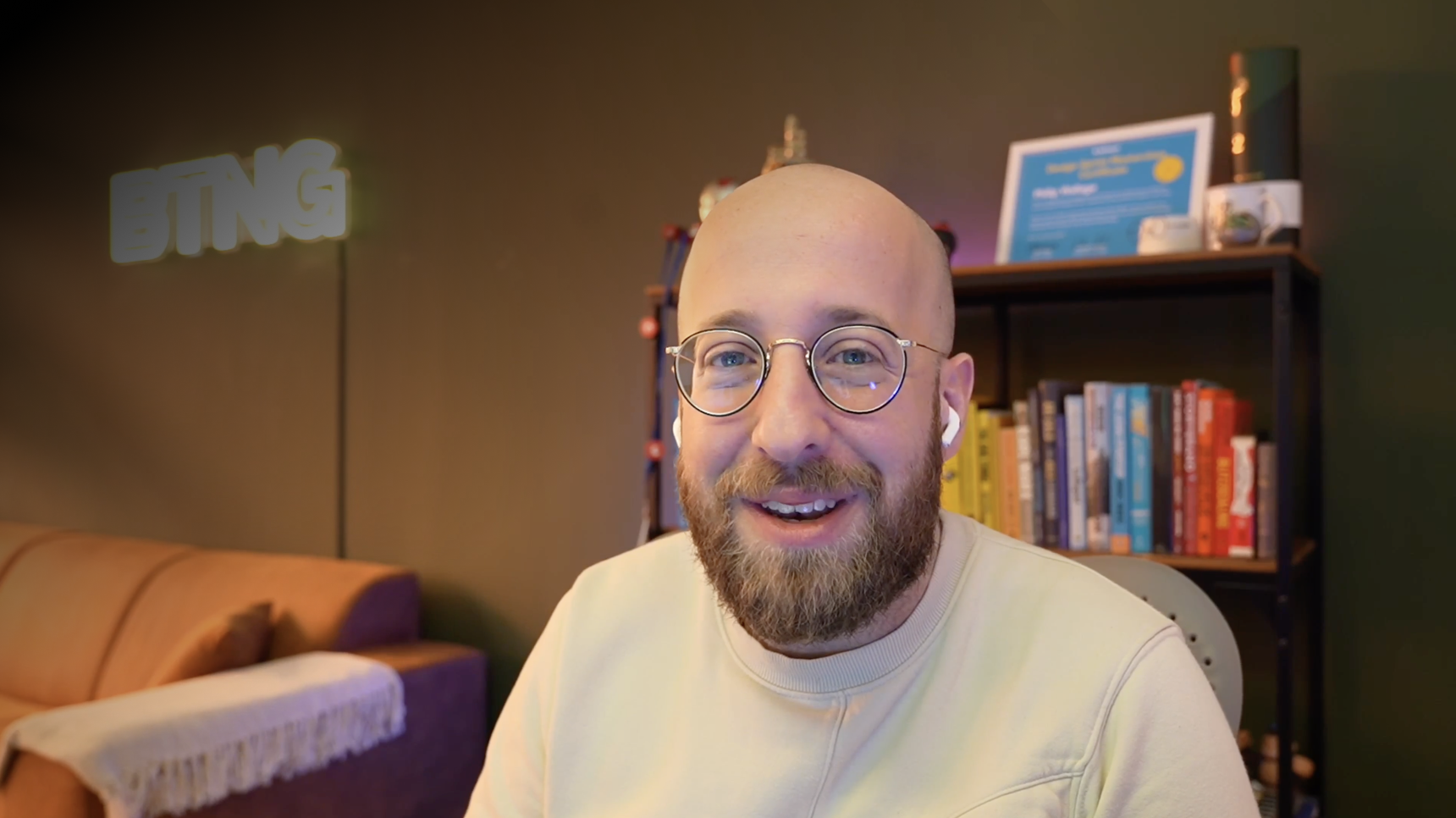The productized service model has been gaining traction worldwide, but for European entrepreneurs, adapting to this model presents unique challenges. In this interview, we sat down with Philip, founder of BTNG Studio, to discuss his journey in transitioning from traditional web design to a scalable subscription-based service. We explore the hurdles he faced, particularly in the European market, and how he overcame them to build a thriving productized service.
From Web Design to Productized Services
Philip's journey into the world of productized services started over 20 years ago when he began building websites. Like many founders, he initially experienced a surge of work through word-of-mouth referrals, leading him to believe he was naturally entrepreneurial. However, scaling his first web design studio proved difficult, leading him to pivot into UX design freelancing.
After working with major brands like Adidas, LEGO, and ASML, Philip became intrigued by the subscription-based service model. Unlike the traditional agency setup, which often involves inconsistent revenue and proposal-heavy sales processes, the productized service model provided a predictable income stream and a scalable way to serve clients.
Why the Subscription Model?
Philip was inspired by the rise of design subscription services like Brett from DesignJoy. The idea of offering design on a recurring basis seemed like an attractive alternative to the unpredictable nature of contract work. However, implementing it in Europe---where businesses are accustomed to proposals and milestone-based payments---wasn't straightforward.
The Challenge: Selling Subscriptions in Europe
In the U.S., the concept of paying upfront for a monthly design subscription is becoming standard. However, European businesses often operate differently:
- Lower credit card adoption: Unlike the U.S., where credit cards are common, many European businesses prefer traditional invoicing.
- Established payment norms: Businesses expect proposals, upfront deposits, and invoice-based payments with 30-day terms.
- Skepticism about new models: European clients tend to be resistant to change, making it harder to introduce a radically different service model.
How Philip Overcame These Barriers
Instead of forcing a rigid subscription model, Philip adapted his offering:
- Flexible Payment Options: He allows clients to pay via invoice instead of requiring immediate Stripe payments.
- Building Trust First: He positions his experience and expertise as the key reason clients choose him, rather than focusing solely on the subscription aspect.
- Educating Clients: By explaining the benefits of the model (such as no long-term contracts and predictable pricing), he eases client concerns.
Tip: If you're selling a productized service in Europe, offering bank transfer options via Stripe can reduce fees significantly compared to credit card transactions (0.5% vs. 3.5%).
The Power of Content & Lead Generation
Philip's marketing strategy is heavily focused on content creation to attract and convert potential clients. Here's how he does it:
1. LinkedIn & X (Twitter)
Philip has been actively posting content related to UX design, e-commerce optimization, and productized services. However, he noticed that many of his followers were fellow designers rather than potential clients. To address this, he refined his targeting strategy using LinkedIn Sales Navigator to connect with e-commerce managers.
2. Providing Value First
Instead of pitching outright, Philip offers valuable content, such as:
- E-commerce optimization reports: He created a Figma file analyzing the top 10 Dutch e-commerce brands and used it as a lead magnet.
- AI-generated visuals: To make his posts stand out, Philip uses AI-generated images to create engaging, sometimes humorous, content.
3. Paid Ads Experimentation
Philip tested Google Ads with a €750/month budget but found it difficult to make profitable. Now, he's focused on organic content and direct outreach.
SEO Insight: Sharing case studies, detailed breakdowns, and industry insights positions you as an expert and helps attract the right audience.
Operations & Scaling with Orchestra
Philip runs his service efficiently using Orchestra, a tool designed to manage productized services. His workflow includes:
- Two Subscription Tiers:
- Self-Managed Plan ($5,000/month): Clients manage their own tasks and there are no calls.
- Managed Plan (€6,800/month): Weekly calls, proactive task management, and strategic input.
- Task Management: He breaks tasks into 2-3 day chunks and tracks them in Orchestra.
- Client Communication: He uses Tella (a Loom alternative) to send quick video updates, reducing unnecessary meetings.
Pro Tip: For agencies offering subscriptions, clear task tracking and frequent progress updates help build client trust and improve retention.
Future Growth Plans
Philip's 2025 strategy is simple: "Less is more." Rather than trying every possible marketing channel, he is focusing on:
- Consistent Content Creation: Maintaining a steady LinkedIn presence and refining messaging.
- Quarterly Lead Magnets: Creating high-value resources every three months to attract new leads.
- Better Client Retention: Refining onboarding and ongoing communication to ensure long-term client relationships.
Key Takeaways
Philip's journey provides valuable lessons for productized service founders, especially those operating in Europe:
✅ Adapt to client payment preferences (offer invoicing alongside Stripe subscriptions). ✅ Educate clients on the benefits of a subscription model rather than forcing it. ✅ Leverage content marketing and direct outreach instead of relying only on paid ads. ✅ Use tools like Orchestra to streamline operations and improve client experience. ✅ Focus on retention and predictable lead generation rather than constant expansion.
If you're looking to start or grow your own productized service, adopting these strategies can help you scale predictably and profitably.
Final Thoughts
Productized services continue to evolve, and as Philip's experience shows, success comes from adapting to your market, providing value, and streamlining operations. Whether you're just starting out or looking to refine your approach, tools like Orchestra can help you manage clients, automate payments, and scale with ease.
🚀 Ready to Launch or Scale Your Productized Service?
Join Orchestra today and streamline your agency's operations. Get started now.
